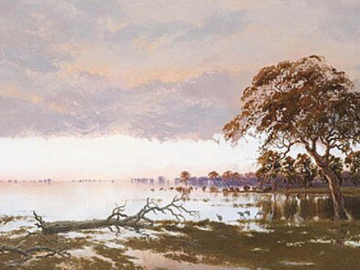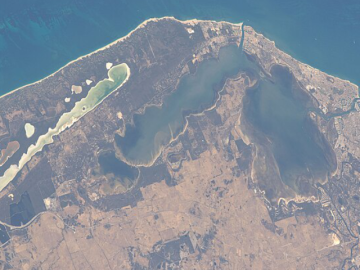Revelations from Dudley
Kathryn Fry
A ribbon of morning-lit glitter reaches the rocks through the sweep of sea from the horizon, out near the edge of the Sydney Basin. That hole into which all manner of debris fell after the Great Dying. I recall the vista of blue from the jagged peak of Mt Tomaree, finding islands in the sun, a Gould’s petrel flying below and that rush of feeling, though you weren’t there. Sandstone I’m sitting on now is two-fifty-two million years old; I’m learning from a geologist on the move, his arms wide with the verve of this ancient story: of river energies, flood plains and sediment brought down. Images of swamped land have inundated our screens, of water draining south, no longer to forests of Glossopteris, that Gondwanan seed- bearer. Now I know it took ten thousand years to form a metre of coal, dark driver of change. He’s showing the group pumice from the under- sea explosion only a dozen years ago. And he’s reading an overhang like a book he’s learnt by heart. I think of you, our different ways, as he points to cross-beds and current flow, bands of varied sizes and aquifer water under pressure. We’re soon to find iron-rich fossilised trunks lying willy-nilly, but I’m stuck on tension between plates or any-two-things close like you and me, and the stresses of our years, scant stuff on the earth’s clock, yet here we are by a graceful force, having scaled any upheavals.
Listen to Kathryn read the poem:


